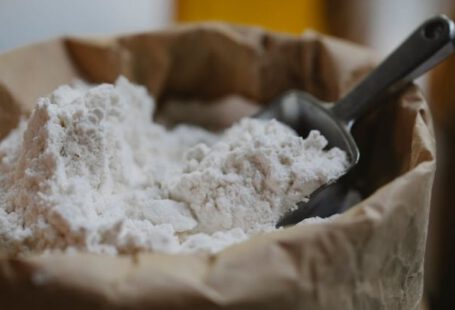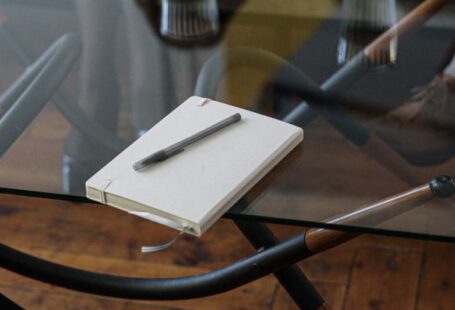In recent years, the zero-waste movement has gained significant momentum as individuals and communities strive to reduce their environmental impact. While many have successfully implemented zero-waste practices in various aspects of their lives, the bathroom presents a unique set of challenges. From single-use plastic packaging to water waste, the bathroom is a space where conscious consumption and waste reduction can be particularly complex. Let’s delve into the challenges of achieving zero waste in the bathroom and explore potential solutions to overcome them.
Plastic Packaging Predicament
One of the primary challenges of zero waste in the bathroom lies in the prevalence of plastic packaging. From shampoo bottles to toothpaste tubes, many personal care products come in non-recyclable or hard-to-recycle packaging. This poses a significant obstacle for those striving to reduce their waste footprint. While some companies have started offering refillable options or packaging made from recycled materials, the majority of bathroom products still come in plastic containers that often end up in landfills or oceans.
To tackle this challenge, individuals can opt for package-free alternatives such as shampoo bars, solid toothpaste tablets, and refillable glass containers for products like lotion and body wash. By choosing products with minimal or compostable packaging, individuals can significantly reduce the amount of plastic waste generated in their bathroom routines.
Water Waste Dilemma
Another critical aspect of zero waste in the bathroom is water consumption. The average American uses about 88 gallons of water per day, with a significant portion of that water being used in the bathroom for activities like showering, flushing the toilet, and washing hands. Reducing water waste in the bathroom can be a challenging task, especially for those living in areas prone to water scarcity or drought.
To address this challenge, individuals can install water-saving fixtures such as low-flow showerheads and dual-flush toilets. Additionally, practicing mindful water usage by taking shorter showers, turning off the tap while brushing teeth, and fixing any leaks can help minimize water waste in the bathroom. By adopting these water-saving habits, individuals can make a tangible impact on their overall water consumption and contribute to a more sustainable future.
Single-Use Product Dependency
The convenience of single-use products has become deeply ingrained in modern bathroom routines, making it challenging to transition to more sustainable alternatives. Items like disposable razors, cotton swabs, and menstrual products generate significant amounts of waste and contribute to environmental pollution. Breaking free from the cycle of single-use product dependency is a key step towards achieving zero waste in the bathroom.
To address this challenge, individuals can switch to reusable alternatives such as safety razors, washable cotton pads, and menstrual cups. While the initial investment in reusable products may be higher, the long-term benefits in terms of waste reduction and cost savings are substantial. By gradually replacing single-use items with reusable options, individuals can significantly decrease their environmental impact and promote a more sustainable approach to personal care.
Waste Sorting and Disposal
Proper waste sorting and disposal present another hurdle in the journey towards zero waste in the bathroom. With various types of waste generated, including recyclables, compostables, and hazardous materials like expired medications, navigating the intricacies of waste management can be overwhelming. Mismanagement of bathroom waste can lead to contamination, improper disposal, and missed opportunities for recycling or composting.
To tackle this challenge, individuals can set up designated bins for different types of waste, clearly label them, and educate themselves on local recycling and composting guidelines. By separating waste at the source and ensuring proper disposal practices, individuals can streamline the waste management process and increase the likelihood of materials being diverted from landfills. Additionally, seeking out community resources for hazardous waste disposal can help prevent environmental harm and promote responsible waste handling.
Sustainable Product Accessibility
Despite the growing demand for eco-friendly and zero-waste products, accessibility remains a significant challenge for many individuals seeking to transition to more sustainable bathroom routines. Limited availability of package-free products, high costs of environmentally friendly alternatives, and lack of information on sustainable options can hinder progress towards zero waste in the bathroom.
To address this challenge, individuals can explore local zero-waste stores, bulk shops, and online retailers specializing in sustainable personal care products. Additionally, DIY solutions using simple ingredients like baking soda, vinegar, and essential oils can offer affordable and environmentally friendly alternatives to conventional products. By researching and supporting brands committed to sustainability, individuals can expand their options for zero-waste bathroom essentials and make informed choices that align with their values.
Embracing a Zero-Waste Mindset
In conclusion, achieving zero waste in the bathroom is a multifaceted journey that requires dedication, creativity, and a willingness to challenge conventional habits. By addressing the challenges of plastic packaging, water waste, single-use product dependency, waste sorting and disposal, and sustainable product accessibility, individuals can make meaningful strides towards a more sustainable bathroom routine. Embracing a zero-waste mindset involves continuous learning, experimentation, and adaptation to overcome obstacles and make a positive impact on the environment. Through conscious consumption, waste reduction, and advocacy for sustainable practices, individuals can contribute to a healthier planet and inspire others to join the movement towards zero waste in the bathroom.





